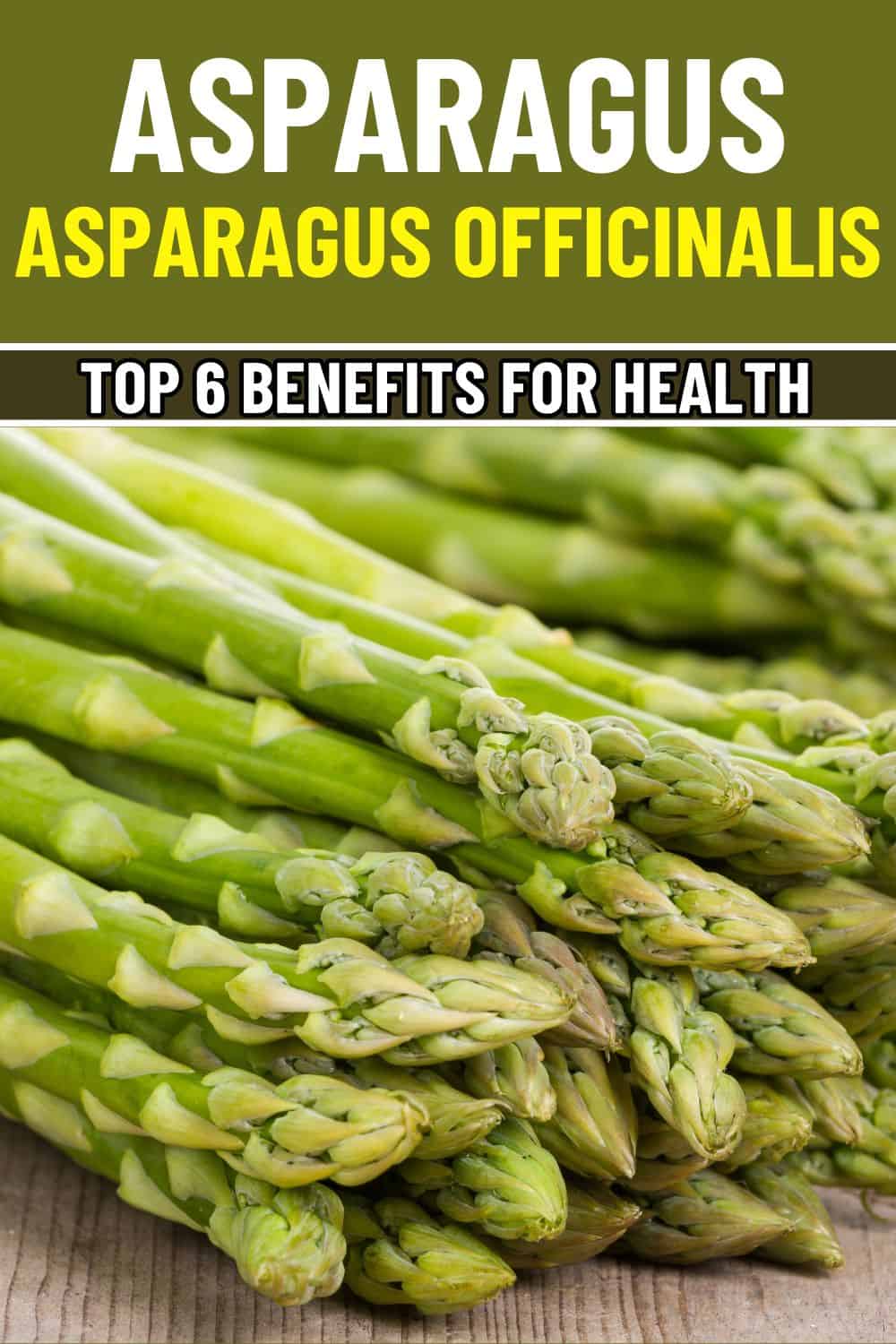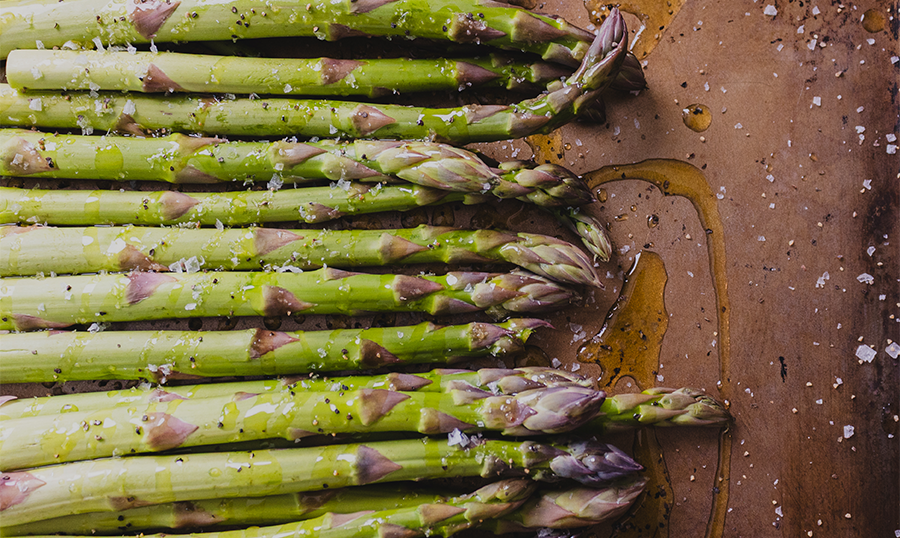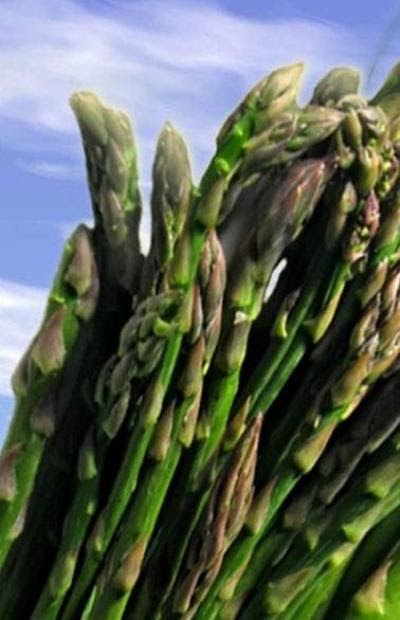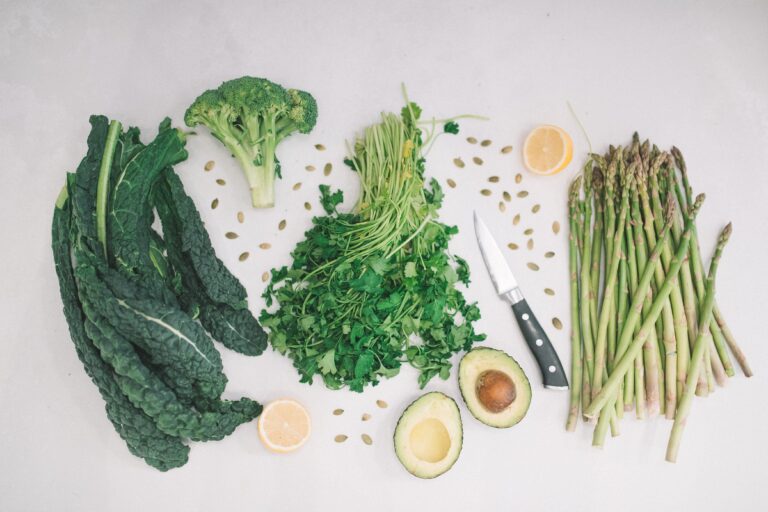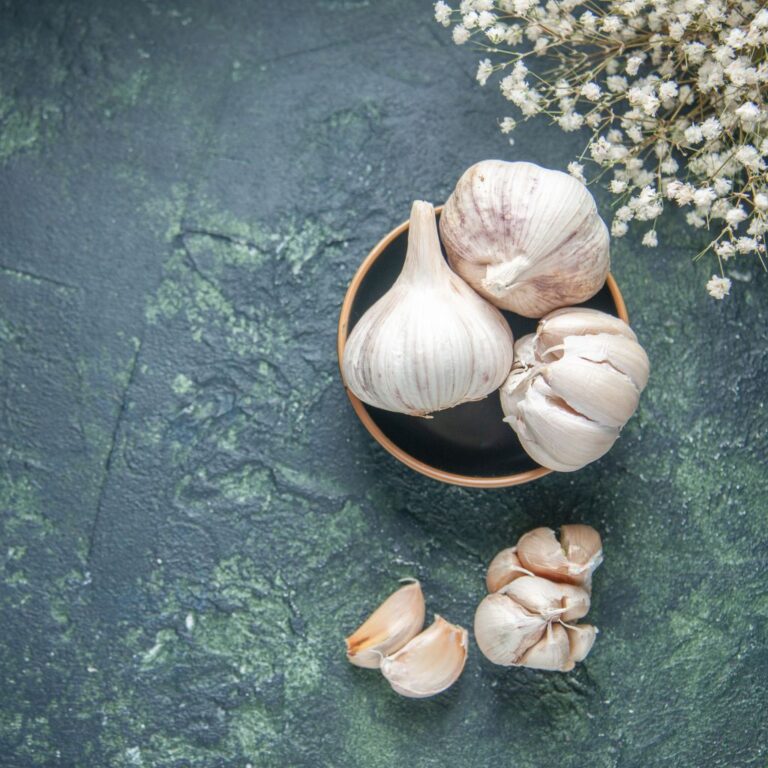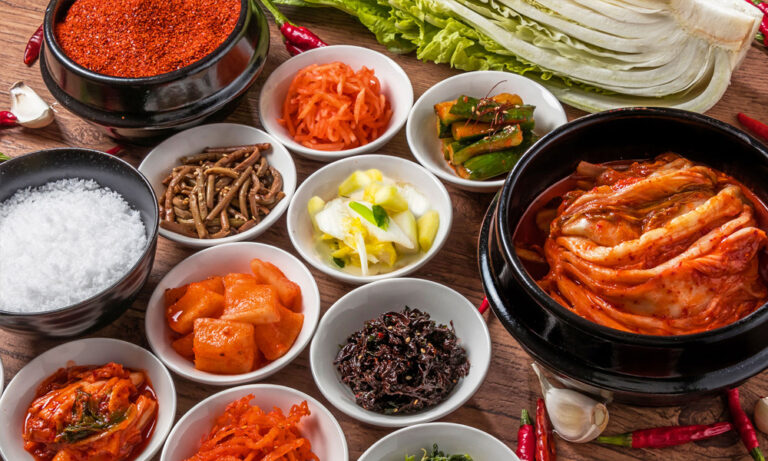The Emerald Harbinger: Why Asparagus Should Be Your Go-To Spring Superfood
As the last vestiges of winter’s chill recede, and the earth awakens with a verdant sigh, a culinary miracle begins its quiet ascent from the soil. Slender, vibrant, and undeniably elegant, asparagus spears emerge as the undisputed heralds of spring. More than just a fleeting seasonal delight, this "green gold" is a nutritional powerhouse, a historical delicacy, and a versatile culinary star, deserving of its esteemed position as the go-to spring superfood. For the discerning palate and the health-conscious mind, asparagus offers a story steeped in ancient tradition, scientific prowess, and sensory pleasure, making its annual appearance a celebration of renewal and well-being.
A Journey Through Time: The Noble Spear’s Pedigree
To truly appreciate asparagus, one must first understand its rich and storied past. This is no culinary newcomer; its roots stretch back millennia, intertwined with the annals of ancient civilizations.
Our journey begins in the Mediterranean basin, the birthplace of Asparagus officinalis. Records suggest its cultivation dates back over 2,000 years, with the Egyptians being among the first to revere its distinct flavor and perceived medicinal properties. Hieroglyphs depict offerings of asparagus, a testament to its early significance.
The Greeks, ever keen observers of nature and health, also embraced the spear. The physician Hippocrates, often considered the "Father of Medicine," prescribed it for its purported diuretic and cleansing effects. However, it was the Romans who truly elevated asparagus to a culinary art form. The famed gourmet Apicius, in his ancient cookbook "De Re Coquinaria," provided detailed recipes for preparing asparagus, indicating its prized status at imperial banquets. Emperor Augustus, known for his speed and efficiency, famously coined the phrase "faster than cooking asparagus" to describe swift action, highlighting its relatively quick cooking time even then. Roman legions, it is said, even carried dried asparagus on their campaigns, rehydrating it for sustenance.
With the decline of the Roman Empire, asparagus cultivation waned in much of Europe, though it persisted in the Arab world, where its aphrodisiac qualities were often celebrated. It wasn’t until the Renaissance, a period of renewed interest in classical knowledge and epicurean pursuits, that asparagus re-emerged with vigor on European tables. France, under the lavish reign of Louis XIV, the "Sun King," became particularly enamored. His personal gardener, Jean-Baptiste de La Quintinie, developed methods to grow asparagus year-round in royal greenhouses, cementing its reputation as a luxury item and "the food of kings."
By the 18th century, asparagus had crossed the Atlantic, finding a fertile home in the burgeoning colonies of North America. George Washington and Thomas Jefferson, both avid gardeners, cultivated it, further embedding it into the culinary fabric of the new nation. The 19th and 20th centuries saw the expansion of commercial cultivation, making it more accessible, though its seasonal appearance continued to mark it as a special treat, a tradition that endures to this day.
This historical lineage is more than mere trivia; it underscores asparagus’s enduring appeal and validates its inherent value. From ancient remedies to royal feasts, its presence has always signaled a connection to health, luxury, and the joyous bounty of the earth.
The Nutritional Powerhouse: Deconstructing the Spear’s Arsenal
Beyond its storied past and elegant appearance, asparagus stands tall as a nutritional titan. Its vibrant green hue is a visual cue to the dense array of vitamins, minerals, and unique phytonutrients packed within each slender spear. For the knowledgeable audience, understanding the specific components that make asparagus a superfood is key to appreciating its profound impact on health.
A. An Abundance of Vitamins:
- Folate (Vitamin B9): Perhaps the most celebrated nutrient in asparagus, folate is critical for numerous bodily functions. It plays a vital role in cell growth and division, DNA synthesis and repair, and the formation of red blood cells. Crucially, folate is essential during periods of rapid growth, such as pregnancy, where it helps prevent neural tube defects in infants. It also aids in converting homocysteine, an amino acid, into methionine, thereby protecting cardiovascular health. A single serving of asparagus can provide a significant portion of the daily recommended intake, making it an excellent natural source.
- Vitamin K1: This fat-soluble vitamin is indispensable for blood clotting (coagulation) and bone metabolism. Vitamin K activates proteins like osteocalcin, which helps bind calcium to the bone matrix, thereby contributing to strong, healthy bones and reducing the risk of osteoporosis.
- Vitamin C: A potent antioxidant, Vitamin C is crucial for immune function, collagen synthesis (essential for skin, connective tissues, and wound healing), and acts as a scavenger of harmful free radicals, protecting cells from oxidative damage.
- Vitamin A (as Beta-Carotene): Asparagus contains beta-carotene, a precursor to Vitamin A. This vitamin is vital for vision, particularly in low light, and supports immune function, skin health, and cell differentiation.
- Vitamin E: Another powerful antioxidant, Vitamin E works synergistically with Vitamin C to protect cell membranes from oxidative stress, supporting overall cellular health and potentially reducing the risk of chronic diseases.
- B-Complex Vitamins (B1, B2, B3, B6): Asparagus also offers a spectrum of B vitamins, including thiamine (B1), riboflavin (B2), niacin (B3), and pyridoxine (B6). These vitamins are essential coenzymes involved in energy metabolism, helping the body convert food into fuel, and playing roles in nerve function and red blood cell production.
B. Essential Minerals for Optimal Function:
- Potassium: An electrolyte vital for maintaining fluid balance, blood pressure regulation, and proper nerve and muscle function. Its presence helps counteract the effects of sodium, contributing to cardiovascular health.
- Iron: Crucial for oxygen transport in the blood (as a component of hemoglobin) and for energy production. A good plant-based source of non-heme iron.
- Phosphorus: The second most abundant mineral in the body, phosphorus is essential for bone and tooth formation, energy storage and utilization, and cellular repair.
- Manganese: A trace mineral that acts as a cofactor for numerous enzymes involved in metabolism, bone formation, and antioxidant defense.
- Zinc: Important for immune function, wound healing, DNA synthesis, and cell growth.
- Selenium: A powerful antioxidant that supports thyroid function and plays a role in immune defense.
- Chromium: This trace mineral is involved in carbohydrate and lipid metabolism and may enhance insulin sensitivity, helping to regulate blood sugar levels.
C. Phytonutrients and Antioxidants: The Hidden Defenders:
Beyond the standard vitamins and minerals, asparagus boasts an impressive array of phytonutrients – plant compounds with significant health benefits.
- Flavonoids: Asparagus is rich in various flavonoids, including quercetin, kaempferol, and isorhamnetin. These compounds are potent antioxidants and possess anti-inflammatory properties, protecting cells from damage and potentially reducing the risk of chronic diseases. Purple asparagus, in particular, is high in anthocyanins, another class of flavonoids responsible for its distinct color and powerful antioxidant capacity.
- Saponins: These plant compounds have been studied for their potential cholesterol-lowering, anti-inflammatory, and even anti-cancer properties.
- Glutathione: Often referred to as the "master antioxidant," glutathione is a tripeptide that plays a critical role in detoxification processes in the liver, neutralizes free radicals, and supports immune function. Asparagus is one of the richest dietary sources of this vital compound.
- Asparagine: This amino acid, from which asparagus derives its name, is a natural diuretic, contributing to the vegetable’s cleansing properties.
D. Fiber: The Gut’s Best Friend:
Asparagus is an excellent source of both soluble and insoluble fiber.
- Insoluble fiber adds bulk to stool, promoting regularity and preventing constipation.
- Soluble fiber forms a gel-like substance in the digestive tract, which can help lower cholesterol and stabilize blood sugar levels. Crucially, asparagus contains a significant amount of inulin, a type of soluble fiber that acts as a prebiotic. Prebiotics are non-digestible food ingredients that selectively stimulate the growth and activity of beneficial bacteria (probiotics) in the gut, thereby supporting a healthy microbiome, enhancing nutrient absorption, and bolstering immune function.
This comprehensive nutritional profile positions asparagus not merely as a vegetable, but as a meticulously crafted natural supplement, offering a symphony of compounds designed to support holistic health.
The Health Benefits Unveiled: Why Your Body Craves It
With such a robust nutritional foundation, it’s no wonder that asparagus delivers a profound array of health benefits, making it an indispensable component of a spring diet.
A. Digestive Dynamo: Nurturing Your Gut from Within
The high fiber content of asparagus is a boon for digestive health. Both soluble and insoluble fibers work in tandem to promote regularity, prevent constipation, and maintain a healthy gut environment. The star player here is inulin, a powerful prebiotic. By feeding the beneficial bacteria in your colon, inulin helps cultivate a diverse and thriving gut microbiome. A healthy gut is linked to improved nutrient absorption, stronger immunity, better mood regulation, and even protection against inflammatory bowel conditions. For those experiencing digestive sluggishness or seeking to optimize their gut flora, asparagus is a natural, delicious remedy.
B. Anti-Inflammatory & Antioxidant Champion: Combating Cellular Stress
Chronic inflammation and oxidative stress are at the root of many modern diseases, from heart disease to cancer. Asparagus, with its rich supply of antioxidants (Vitamins C, E, glutathione, flavonoids like quercetin and kaempferol) and anti-inflammatory compounds (saponins, specific flavonoids), acts as a formidable defense. These compounds work to neutralize free radicals, reduce cellular damage, and mitigate inflammatory responses throughout the body. Regular consumption can contribute to a lower risk of chronic inflammatory conditions and support overall cellular longevity.
C. Cardiovascular Guardian: Protecting Your Heart’s Rhythm
Asparagus offers a multi-pronged approach to heart health. Its high folate content helps reduce homocysteine levels, an amino acid linked to an increased risk of heart disease when elevated. Potassium, an essential electrolyte, helps regulate blood pressure by counteracting the effects of sodium, promoting vasodilation, and maintaining proper fluid balance. Furthermore, the soluble fiber in asparagus can help lower LDL ("bad") cholesterol levels, while its anti-inflammatory properties protect blood vessels from damage.
D. Bone Health Booster: Strengthening Your Framework
Vitamin K1 is paramount for bone health, activating proteins like osteocalcin, which are essential for calcium binding within the bone matrix. A single serving of asparagus provides a substantial amount of this vital vitamin, contributing to bone density and reducing the risk of fractures and osteoporosis, especially as we age.
E. Brain & Cognitive Support: Fueling Mental Clarity
The brain, a highly metabolic organ, benefits immensely from the nutrients found in asparagus. Folate is crucial for the synthesis of neurotransmitters, which are essential for mood regulation, memory, and cognitive function. The antioxidants present help protect brain cells from oxidative damage, potentially slowing age-related cognitive decline and reducing the risk of neurodegenerative diseases.
F. Blood Sugar Regulation: Aiding Metabolic Balance
The fiber content in asparagus plays a significant role in managing blood sugar levels. Soluble fiber slows down glucose absorption, preventing rapid spikes after meals. Additionally, the trace mineral chromium found in asparagus may enhance the action of insulin, improving glucose uptake by cells and contributing to better blood sugar control, which is particularly beneficial for individuals with diabetes or those at risk.
G. Natural Diuretic & Detoxifier: Cleansing the System
Asparagus is well-known for its natural diuretic properties, primarily attributed to the amino acid asparagine and its high potassium content. This gently encourages the kidneys to excrete excess fluid and salts from the body, which can help reduce bloating, support kidney function, and aid in flushing out toxins. This makes it an excellent food for natural detoxification, helping the body feel lighter and more refreshed as spring unfolds.
H. Cancer-Fighting Potential: A Protective Shield
While no single food can prevent cancer, asparagus contributes to a cancer-protective diet. Its rich antioxidant profile, particularly glutathione, helps neutralize carcinogens and protect DNA from damage. The saponins and various flavonoids also exhibit anti-proliferative effects against certain cancer cells in in vitro studies. Its anti-inflammatory properties further support the body’s natural defenses against disease.
I. Pregnancy Powerhouse: A Mother-to-Be’s Ally
For expectant mothers, asparagus is a nutritional gem, primarily due to its exceptional folate content. Adequate folate intake before and during early pregnancy is crucial for preventing severe neural tube defects in the developing fetus. Beyond folate, the other vitamins and minerals support the increased nutritional demands of pregnancy, aiding in healthy fetal development and maternal well-being.
J. Weight Management Ally: A Smart Dietary Choice
Asparagus is remarkably low in calories (approximately 20 calories per 100 grams) and high in water and fiber. This combination makes it an incredibly satisfying food that promotes satiety without adding excessive calories. Its diuretic properties can also help reduce water retention, contributing to a feeling of lightness. Incorporating asparagus into meals can be a strategic way to manage weight while ensuring a high intake of essential nutrients.
Beyond the Plate: Culinary Versatility & Sensory Pleasure
The true joy of asparagus extends beyond its impressive nutritional label; it lies in its culinary adaptability and the sheer sensory pleasure it brings to the table. For the knowledgeable cook, asparagus is a canvas for creativity, responding beautifully to a myriad of preparation methods.
A. Selecting the Best: The Art of Freshness
The first step to a sublime asparagus experience is selection. Look for spears that are bright green or purplish-green, with tight, closed tips. The stalks should be firm and snap crisply when bent, indicating freshness. Avoid limp or withered spears, or those with open, flowering tips, as these are signs of age and reduced flavor. Thicker spears tend to be more tender and flavorful than very thin ones, contrary to popular belief, as they have a higher water content.
B. Storing for Longevity: Preserving the Peak
To maintain freshness, treat asparagus like a bouquet of flowers. Trim about an inch off the bottom of the stalks and stand them upright in a glass or jar with about an inch of water. Cover the tips loosely with a plastic bag and refrigerate. Stored this way, asparagus can remain fresh for up to a week, though it’s always best enjoyed as soon as possible after purchase.
C. Preparation Techniques: The Snap and the Trim
Before cooking, wash the spears thoroughly. The traditional method for removing the woody end is to gently bend a spear until it naturally snaps. This ensures you’re left with only the tender, edible portion. Alternatively, you can line up the spears and trim the bottom inch or two with a knife. For aesthetic purposes or faster, more even cooking, you can also peel the bottom half of thicker spears with a vegetable peeler.
D. Cooking Methods & Pairings: A Symphony of Flavors
Asparagus is incredibly versatile, lending itself to various cooking methods, each coaxing out different nuances of its unique flavor profile.
- Roasting: Perhaps the most popular method, roasting at a high temperature (around 400°F/200°C) with a drizzle of olive oil, salt, and pepper caramelizes the natural sugars, intensifying its earthy sweetness and giving it a delightful tenderness with slightly crisp edges. A squeeze of lemon juice after roasting brightens the flavors.
- Grilling: Similar to roasting, grilling imparts a smoky char that complements asparagus beautifully. Toss with olive oil, salt, and pepper, then grill over medium-high heat until tender-crisp and lightly charred.
- Steaming/Blanching: For a delicate, vibrant green spear, steaming or blanching (briefly cooking in boiling water followed by an ice bath) is ideal. This method preserves its crisp texture and natural flavor. Perfect for salads or as a delicate side dish.
- Sautéing/Stir-frying: Quick and easy, sautéing asparagus in a hot pan with garlic or shallots yields tender-crisp results. It integrates well into stir-fries with other spring vegetables.
- Raw: Don’t underestimate raw asparagus! Thinly shaved spears add a delightful crunch and fresh, slightly bitter note to salads, often paired with creamy cheeses or bright vinaigrettes.
E. Classic Pairings & Beyond:
Asparagus has a natural affinity for certain flavors:
- Lemon: Its bright acidity enhances asparagus’s freshness.
- Garlic & Shallots: Aromatic foundations that deepen its savory notes.
- Parmesan Cheese: The salty, umami notes of Parmesan create a classic, comforting pairing.
- Eggs: Whether in a frittata, quiche, or simply topped with a poached egg, asparagus and eggs are a match made in culinary heaven.
- Hollandaise Sauce: The rich, creamy, and tangy sauce is a luxurious accompaniment, particularly to steamed or blanched asparagus.
- Prosciutto or Bacon: The salty, crispy cured meat provides a wonderful contrast in texture and flavor.
- Goat Cheese: Its tangy creaminess complements the earthy notes of asparagus.
- Fresh Herbs: Dill, chives, tarragon, and parsley all elevate its flavor.
From simple roasted spears to elegant risottos, vibrant salads, and hearty quiches, asparagus seamlessly integrates into a wide array of dishes, ensuring that its nutritional benefits are enjoyed in myriad delicious ways.
The Asparagus Experience: From Field to Fork and Beyond
The true "story" of asparagus culminates in the experience of consuming it. Its arrival in spring is a reminder of seasonality, a practice that connects us more deeply to our food sources and the rhythms of nature. Choosing locally grown asparagus from a farmers’ market not only guarantees peak freshness and flavor but also supports local agriculture and reduces your carbon footprint. This conscious consumption elevates the simple act of eating into a holistic experience.
And then there’s the unique "asparagus pee" phenomenon – a topic often met with a mix of amusement and curiosity. For the knowledgeable audience, it’s worth a brief scientific detour. The distinctive odor that some people notice in their urine after eating asparagus is due to the rapid metabolism of asparagusuic acid, a sulfur-containing compound unique to asparagus. When broken down, it produces volatile sulfur compounds that are excreted through the kidneys. Interestingly, not everyone produces the odor, and not everyone can smell it, even if they produce it. This genetic variation is a fascinating quirk of human biology, highlighting the subtle ways our bodies interact with the food we eat. Far from being a cause for concern, it’s merely a benign, fleeting indication of asparagus’s powerful bioactive compounds at work within your system.
Embracing asparagus in spring is about more than just nutrition; it’s about celebrating the bounty of the season, engaging with culinary traditions, and understanding the profound connection between food, health, and the natural world. It’s an act of mindfulness, a delicious commitment to vibrant living.
Conclusion: Embrace the Green Gold
As spring bursts forth in full glory, painting the world in shades of green and gold, let the noble spear of asparagus be your chosen emblem of renewal and vitality. Its journey from ancient reverence to modern superfood status is a testament to its enduring power – a power rooted in an unparalleled nutritional profile, a wealth of health-promoting benefits, and an irresistible culinary versatility.
From safeguarding your heart and bones to nurturing your gut and brain, from bolstering your immunity to aiding in detoxification, asparagus stands as a verdant powerhouse, ready to infuse your body with its life-giving energy. It’s a reminder that nature, in its infinite wisdom, provides exactly what we need, precisely when we need it.
So, as the days lengthen and the air softens, seek out these slender, emerald gems. Roast them until tender-crisp, grill them to smoky perfection, or shave them raw into a vibrant salad. However you choose to enjoy it, let asparagus be your go-to spring superfood, a delicious and potent ally in your pursuit of health and a joyful celebration of the season’s magnificent bounty. Embrace the green gold, and let your body thrive.
